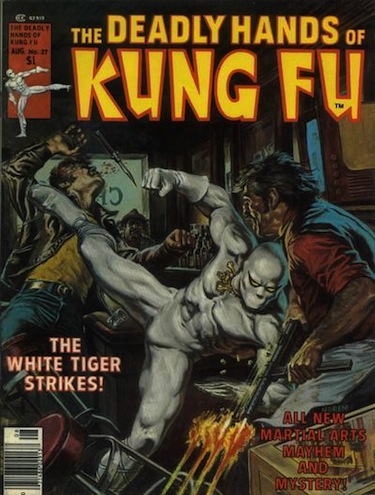
Here are the first couple of paragraphs of what I’ll be talking about at the National Council of Teachers of English this weekend. I’ll be on the panel “We’re On the Case: Latino Writers of YA Mysteries,” featuring Sarah Cortez, Rene Saldaña, Sergio Troncoso, and Ray Villareal.
Tinting Fiction: Writing Genre Fiction Geared Toward Age and Ethnicity
When I was a boy there was a superhero called the White Tiger, who was created by Marvel Comics in 1975. The White Tiger was distinguished among the ranks of Marvel’s heroes in that he was their first Puerto Rican superhero. His secret identity was Hector Ayala, and he found the amulets that gave him his martial arts powers in a trashcan (Mantlo). He used Spanish phrases on every pulpy page, a “¡Madre de dios!” here, a “¡Carajo!” there, to remind us that he was Latino, lest we forget. In time, Ayala becomes psychologically and physically addicted to the amulets. He retires, but years later, in a botched attempt to prevent a robbery, he is caught holding a stolen TV and standing over the body of murdered police officer. At his trial, Daredevil is his lawyer, but after Ayala loses his temper when questioned about his marriage (oh, that fierce Latino temper!), he is found guilty. Distraught, he grabs a gun and is subsequently shot and killed (Bendis). Thus ends the tale of the first mainstream Puerto Rican superhero, a poor guy who searches the trash and ends up shot by cops.
The White Tiger is an example of how writing an ethnic character for a genre market can go horribly wrong. Rather than embodying the thrills of adolescent fantasy, for example, the Tiger is stuck in a stereotypical world of urban ills such as poverty, drug dealers, and gang violence. While the Tiger was meant to diversify comic books and broaden the audience, the result seemed naïve at best and patronizing at worst. This is one of the problems of writing ethnic characters for any market, but it produces particular challenges for the YA audience when you consider that the images and characters young people read can form the basis of their lifelong beliefs.